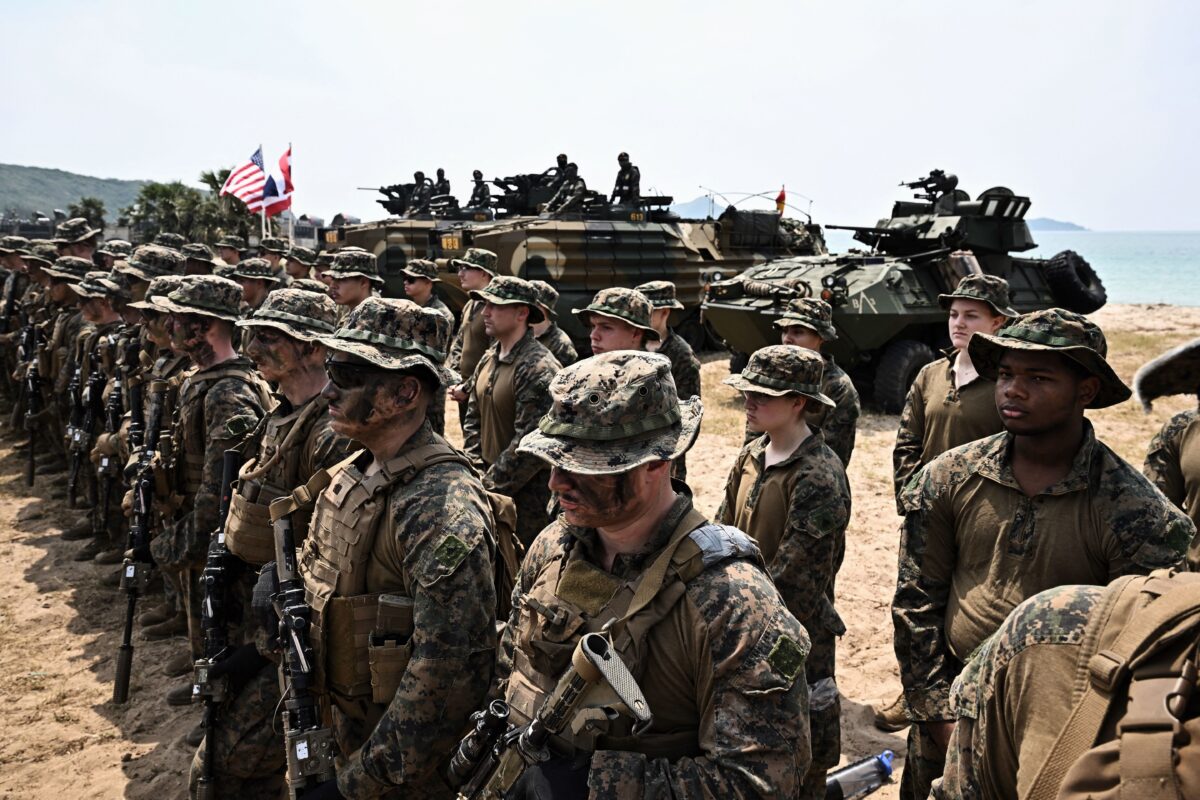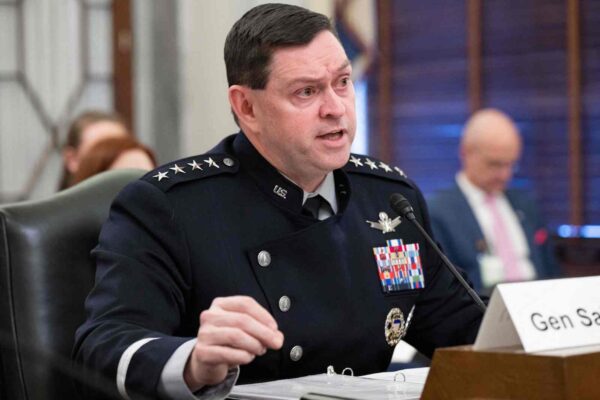


When Peru’s Congress announced on May 19 that U.S. troops would arrive to participate in joint security training exercises, left-wing opposition to interim President Dina Boluarte quickly sounded the cry of coup d’etat.
The move created a ripple effect in the region as thousands continue expressing anger and concern, including former left-wing Bolivian President Evo Morales.
Peru’s Congress indicated the arrival of the U.S. military would begin on June 1 and run through Dec. 31 this year. But a termination date for official U.S.-Peruvian security training exercises is scheduled for the end of August.
The series of security-cooperation tasks is part of a joint U.S. Air Force and Southern Command program called Resoute Sentinel 2023.
A total of 1,172 members of the U.S. military will participate in the program, according to a Peruvian government press release.
U.S. Southern Command spokesperson, Richard Crusan, told The Epoch Times the U.S. Embassy confirmed the number of troops reported by the Peruvian Congress.
Crusan further noted the deployment was a “standard annual exercise.”
“Three activities that make up the ‘Resolute Sentinel 2023’ exercise will be carried out in Lima, Callao, Pucusana, Talara … Chiclayo, and Piura, on various dates between June 1 and Aug. 29, 2023,” the Peruvian press release stated.
Supporters of the impeached and jailed former President Pedro Castillo claim the arrival of American troops threatens national sovereignty.
However, Washington’s interests appear to be focused skyward rather than on the Peruvian political strife on the ground.
Of the nearly 1,200 U.S. military personnel heading to Peru, more than 970 are reportedly members of the U.S. Air Force and Space Force.
Barely two weeks later, another Peruvian official announced the country’s official participation in upcoming Moon missions with the National Aeronautics and Space Administration (NASA) Artemis Program.
The executive president of the Geophysical Institute, Hernando Tavera, confirmed Peru’s official participation in NASA’s Artemis Program during a June 6 press conference.
Cooperation with NASA will be done using the Sicaya Radio Astronomical Observatory, located in the mountainous region of Huancayo in central Peru.
The objective is to use the observatory to monitor trajectory and communicate with spacecraft.
Taverna also noted his country’s cooperation with NASA is part of the U.S. agency’s historical objective to establish a long-term human presence on the Moon.
NASA admits this much on its website, stating: “We will collaborate with commercial and international partners and establish the first long-term presence on the Moon.”
Boluarte’s cooperation with the U.S. military and NASA offers a two-birds, one-stone scenario for Washington.
On one hand, it offers a passive force that some allege is meant to deter ongoing protests against the interim president’s regime.
With a more stable America-friendly government in a region growing increasingly hostile toward U.S. interests, Washington has little to lose.
More importantly, a beefed-up U.S. security presence pointed skyward creates a significant counterpoint to the fast-growing Chinese space program and satellite surveillance stations in the southern Americas.
Alignment Of Stars
“Events have pushed the Boluarte government towards closer cooperation with the United States,” Evan Ellis, a Latin America research professor for the U.S. Army War College Strategic Studies Institute, told The Epoch Times.
Ellis says the “stars have aligned” for U.S.-Peruvian relations through a series of chaotic and unpredictable events over the past seven months.
It all started with the whirlwind impeachment and arrest of Castillo on Dec. 7, 2022.
Earlier that same day, a visibly nervous Castillo addressed the Peruvian people and announced his intention to dissolve Congress, make constitutional amendments, and install a 10 p.m. mandatory national curfew.
The decree was an attempt to curb months of civilian protests against his regime, and impeachment attempts.
It backfired immediately.
Peru’s Congress called an emergency session where 101 legislators voted to remove Castillo on grounds of “permanent moral disability.”
His vice president and current head of state, Boluarte, was then sworn into office. The astounding turn of events happened within only a few hours.

Since then, the embattled Boluarte has dealt with months of protests from Castillo supporters demanding her resignation.
For the United States, Castillo presented an obstacle to deeper bilateral relations and trade.
In 2021, the newly elected socialist leader prioritized relations with Chinese businesses, especially in the mining sector.
“Peru has long had a relationship with Russia, China, and others,” Ellis said, adding, “Of course, China’s presence is a concern. This is a very delicate time.”
During his short 16 months in office, Castillo parroted much of the same anti-U.S. rhetoric heard from other left-wing regimes in the region such as Bolivia, Venezuela, and Nicaragua.
But with Boluarte at the helm, Washington has a new window of opportunity to expand security relations and check China’s fast-expanding space presence in the Americas.
When it comes to left-wing sympathizers crying “wolf” as U.S. troops arrive in Peru, Ellis just shrugged.
“It’s always been part of the playbook of the Latin American left to hype U.S. security cooperation. This isn’t new.”
Eyes In The Sky
The timing for joining security initiatives in Peru couldn’t be better for the United States.
The Chinese Communist Party (CCP) hasn’t exactly hidden its ambitions of making China’s space program an industry leader. Admitting this much in a 2022 government white paper, the CCP stated its space initiative is “a critical element of the overall national strategy.”
Presently, there are 12 known ground stations in South America the CCP uses as part of a global network to maintain satellite communications.
But CCP intelligence officials using a dozen of these facilities in America’s backyard has triggered concerns among security analysts and Washington think tanks that Chinese agents could intercept sensitive information and spy on U.S. assets.
A primary example of this concern is the Espacio Lejano ground station in Argentina.
Since 2012, the facility has been a closely guarded secret after local officials leased almost 500 acres to China to construct a space observatory with no government oversight.
Public access is forbidden. Even Argentine government officials can’t enter without special permission. The only personnel that goes in or out are CCP agents.
The contract between the two nations is also dubious. It states Argentina’s government can’t “interfere or interrupt” operations at the facility at any time.
The former head of the U.S. Southern Command, Admiral Craig Faller, sounded the alarm over the Espacio Lejano facility in 2019 during testimony to the House Armed Services Committee.
“Beijing could be in violation of the terms of its agreement with Argentina to only conduct civilian activities and may have the ability to monitor and potentially target U.S., allied, and partner space activities,” Faller said.
But that was just one ground station. There are 11 others all over the continent.
“Peru has been doing stuff with China on the space side since 2006,” Ellis confirmed.
This makes the arrival of the U.S. Air Force, Space Force, and NASA even more timely.

The central and southern Peruvian highlands are within a geographical stone’s throw of three key facilities China uses in its space initiatives. Two of them are in Bolivia, while a third is in the Atacama desert region of northern Chile.
In February this year, General Bradley Chance Saltzman, the U.S. Chief of Space Operations, called China the “most challenging threat” to global security.
“We have to account for the fact that space as a contested domain has fundamentally changed. The character of how we operate in space has to shift,” Saltzman told reporters during a press event.
And while NASA operates separately from the U.S. military, Peruvian participation in the Artemis program is still a strategic gain for Washington.
Ellis noted NASA could offer “competitive resource advantages” in Peru.
Meanwhile, China dominates the South American chessboard on which the CCP strives for space and intelligence dominance.
The U.S. Space Force and NASA did not respond to an Epoch Times’ request for comment in time for deadline.

